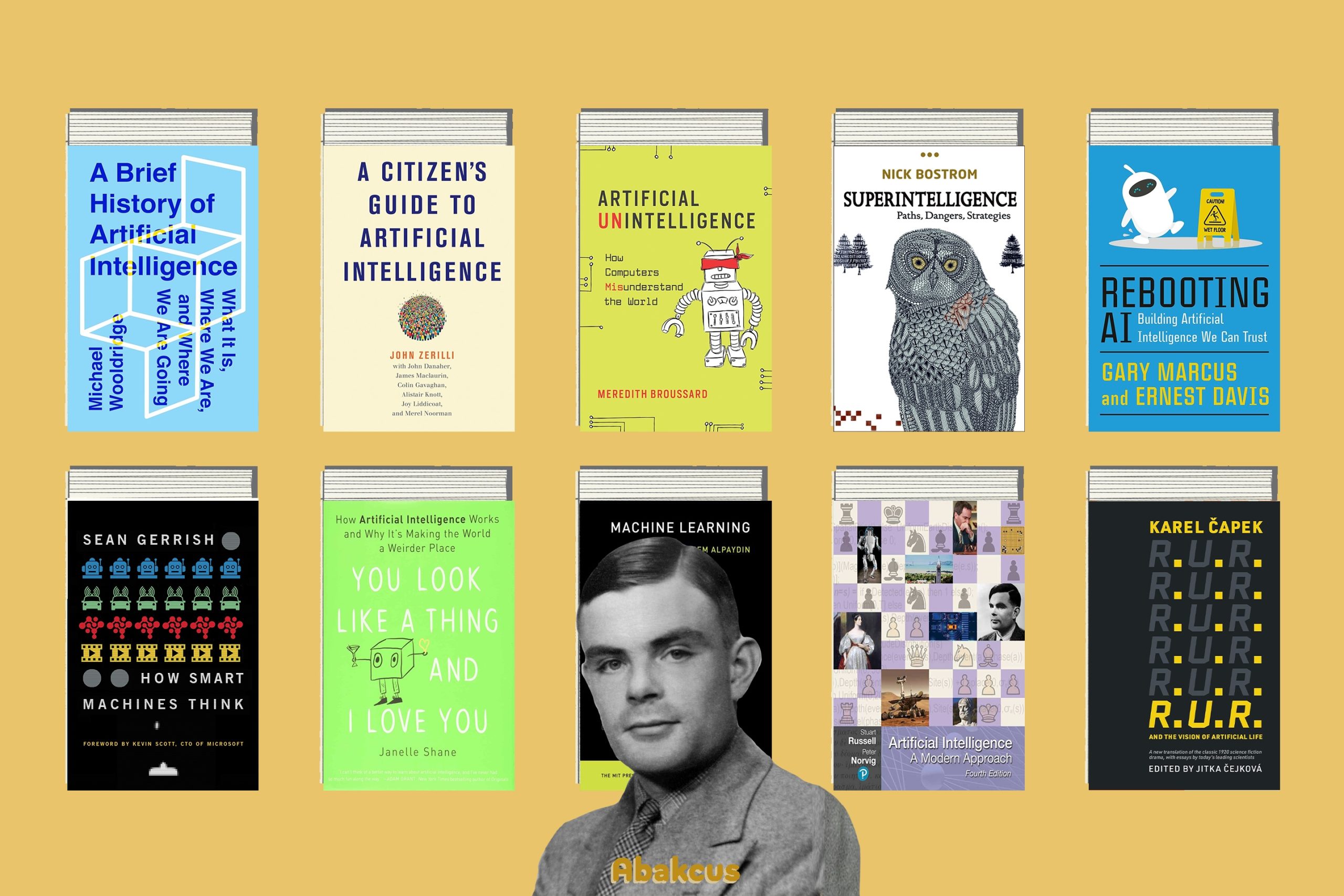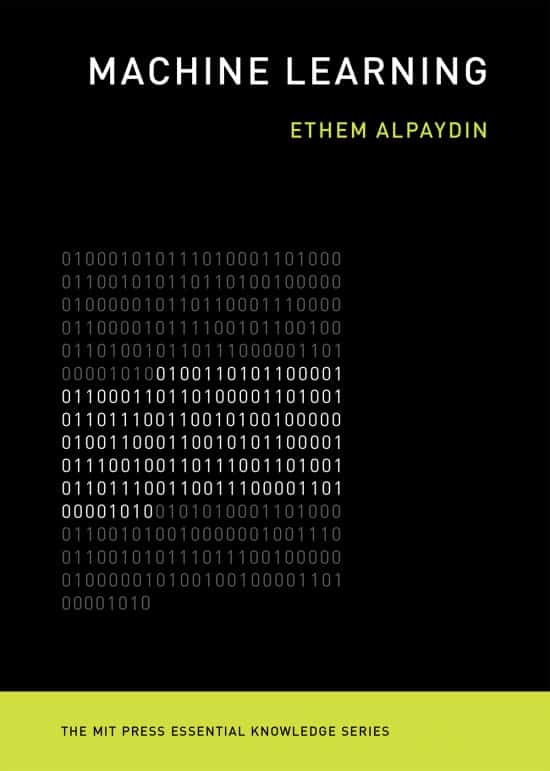Artificial Intelligence (AI) has woven itself into the fabric of our everyday lives, permeating every facet from self-driving cars to facial recognition technology. The prevalence and influence of AI are on an upward trajectory, transforming the world as we know it. For those who aspire to delve deeper into the world of AI, artificial intelligence books offer a treasure trove of knowledge. These comprehensive resources can provide novice learners with a solid foundation, unraveling the complexities of AI theories, principles, and applications. Let’s delve into our curated selection of the best artificial intelligence books, ideal for beginners looking to embark on this fascinating journey of learning.
Read Artificial Intelligence Books and Learn From Experts
One of the paramount benefits of reading artificial intelligence books is the acquisition of profound and multifaceted knowledge that’s hard to come by on the internet. While most online resources offer cursory overviews or summaries on AI, a book allows you to immerse yourself, offering a deep dive into specific subjects from various perspectives. This approach facilitates a comprehensive understanding of AI, significantly exceeding the depth of knowledge typically accessible via the internet. Whether it’s the intricate algorithms that power AI, or the ethical implications of its application, a well-written book can be an invaluable resource for anyone looking to thoroughly comprehend this complex and evolving field.
Another compelling reason to delve into artificial intelligence books is their authorship by field experts. Many of these authors have dedicated years, if not decades, to exploring and writing about AI, and their expertise is evident in their writing. These seasoned professionals provide reliable and current overviews of the latest advancements in AI technology.
Additionally, many of these experts offer practical advice and insights throughout their work, aiding readers in applying their newly acquired knowledge to real-world scenarios. Hence, by reading AI books, you not only acquire an understanding of AI but also gain access to a wealth of experiential knowledge, enabling a more enriching and practical learning experience.
10+ Top Artificial Intelligence Books for Beginners

Below I’ve curated a list of the seven best artificial intelligence books, perfect for those keen to learn about the intriguing world of AI, its capabilities, mysteries, and its potential to reshape our world. If you enjoy this book list, you should also check out 20 Best Machine Learning Books for Beginners and Experts.
As we move towards a future where artificial intelligence (AI) will play an even more significant role in our lives, concerns around its potential dangers have become more and more relevant. In his book, “Superintelligence,” philosopher Nick Bostrom provides a thought-provoking perspective on how a superintelligent AI could pose a significant threat to humanity.
Bostrom’s central premise in “Superintelligence” is that the development of a superintelligent AI could have disastrous consequences for humanity. He explores scenarios where an AI that is capable of rapid reinforcement learning could pose a significant danger to humans, and discusses the possible dangers of three different types of superintelligence: brain emulation, genetic engineering, and synthetic/code-based AI.
One of the most engaging aspects of Bostrom’s book is his emphasis on ensuring that we take appropriate measures to ensure AI doesn’t accidentally or intentionally harm humans. He examines how society can manage AI that surpasses human intelligence, taking a deep dive into slowing its learning and ensuring that it doesn’t go against human interests.
While some argue that the dangers of AI are overstated, Bostrom offers a convincing argument for taking careful consideration of the potential risks of AI and considering the ways we can prevent it from harming humans.
It’s important to note that while AI has made significant advancements, today’s AI is still relatively narrow. Most efforts in AI focus on solving specific problems and less than 1% is geared towards achieving general intelligence, something that Bostrom believes is a key step towards developing superintelligence.
However, one of the book’s limitations is that while it provides a history of AI, it falls short when it comes to addressing realistic representation outside of hyperbolic fears. There are practical challenges to be considered when creating a superintelligent AI, and the book could have benefitted from a more in-depth examination of these obstacles and how they can be overcome.
Overall, Nick Bostrom’s “Superintelligence” is a fascinating piece of literature that provides readers with a unique and engaging perspective on the dangers of AI. His arguments regarding how society should handle AI that surpasses human intelligence are compelling, and the book encourages readers to think more critically about the role of AI in our future. While the book’s limitations cannot be ignored, the valuable insights it provides make it a must-read for anyone interested in the intersection of technology and philosophy.
Artificial Intelligence (AI) is a hot topic nowadays, and not a day goes by without hearing some news or opinions about AI’s potential to change the world. However, behind the hype, there’s also a growing concern about AI’s limitations, and how far it can go in achieving its lofty goals. In the book “Rebooting AI: Building Artificial Intelligence We Can Trust,” authors Gary Marcus and Ernest Davis take a realistic look at where AI stands currently and provide an insightful overview of how it can move forward towards reliable and robust AI.
One of the main points that Marcus and Davis make is that the current boom and hype surrounding AI are often focused only on one aspect, which is Deep Learning. While Deep Learning has made significant strides in recent years, it also has significant limitations, such as being data-hungry and not being explainable or transparent. Marcus and Davis show that relying solely on data-driven approaches like Deep Learning is not enough to achieve true general AI that can learn and reason across multiple domains and contexts.
Therefore, Marcus and Davis argue that a combination of knowledge-driven and data-driven approaches is needed to create general AI that can go beyond the limits of Deep Learning. Knowledge-driven approaches rely on rules, logic, and prior knowledge to structure the learning process and guide the search for patterns and correlations. This approach can help overcome some of the limitations of data-driven approaches and provide a more explainable and transparent AI system.
One of the strengths of “Rebooting AI” is how it conveys complex concepts and technical details in a simple and accessible way. The authors use real-world examples and stories to illustrate their points, making the book engaging and enjoyable to read. For instance, they describe how a simple logic rule can solve a game of Sudoku, which is beyond the reach of most Deep Learning algorithms. This example highlights how knowledge can play an essential role in AI’s development and how combining knowledge and data can create more robust and reliable AI systems that can handle complexity and uncertainty.
Another misconception that Marcus and Davis address is the idea that AI is on the verge of creating self-aware machines that can think and reason like humans. The authors argue that AI’s progress is still far from approaching human-level intelligence and that it will take many breakthroughs in AI research before we can achieve anything close to that. Moreover, they warn about the dangers of expecting too much from AI, such as the fear of creating an unfriendly AI that can harm humans, as depicted in science fiction movies like Terminator or The Matrix.
In conclusion, “Rebooting AI” provides a refreshing perspective on the current state of AI and its potential for meaningful progress towards more reliable and robust AI systems. By challenging the trend of promoting AI through press releases and highlighting the limitations of data-driven approaches, Marcus and Davis offer a more realistic and pragmatic approach to AI’s development. Ultimately, AI’s success will depend on how well we can balance the technical challenges with the ethical and societal implications of AI’s impact. As such, “Rebooting AI” is an essential guide that can help us navigate the complex terrain of AI research and development.
The world of Artificial Intelligence (AI) can be both amazing and terrifying at the same time. It’s amazing how AI can change the way we live, work, and think, but at the same time, it can pose potential risks to our privacy, security, and jobs. Thus, understanding AI and its applications are becoming more critical than ever before.
One of the most exciting and educational reads in the genre is Janelle Shane’s “You Look Like a Thing and I Love You”. This critically acclaimed book is not only fascinating and witty, but also serves as a mandatory read for policy-makers, educators, and anyone interested in this evolving field.
You Look Like a Thing and I Love You starts by introducing the author’s blog named AI Weirdness, where she shares her experiments and insights on creating or training AI models. For instance, she shares the experience of training an AI model to generate paint colors. While the model was hilariously bad at naming some colors (i.e., “Snowbonk,” “Stoner Blue”), it was also capable of producing some beautiful and unique ones (i.e., “Turdly,” “Sindis Poop,” “Stummy Beige”).
Furthermore, Shane provides a clear and concise explanation of what AI is and how it works. She also delves into the different types of machine learning, like supervised, unsupervised, and reinforcement learning.
You Look Like a Thing and I Love You also covers the limitations of AI models. One of the most significant sources of problems in AI models is training and testing. For example, if the data used to train the model isn’t diverse enough, it can lead to serious biases and errors later on.
Shane also discusses a subject that has received a lot of attention in the AI industry recently, “Explainable AI”. ExAI is an attempt to make AI models more transparent, by providing explanations of why they make particular decisions. This can be particularly important when AI models are used in decision making that has ethical implications.
You Look Like a Thing and I Love You also focuses on real-world applications of AI, such as gaming, image generation, and language translation. For example, Shane explains how AI models can be trained to play games like Chess or Go at superhuman levels. Additionally, she discusses how AI models are capable of generating images of things that don’t exist, like fictional creatures, personalities, or products. And when it comes to language translation, AI models can help us have access to more information by breaking down language borders.
You Look Like a Thing and I Love You busts some popular myths about AI and automation, like the idea that “Robot are coming for your jobs,” or “AI models are smarter than human beings.” While AI models are fantastic at specific tasks that require specific skills, they are still far less versatile than humans. AI is only as intelligent as the data and parameters used to create it.
Furthermore, Shane highlights that AI can’t understand human context, sarcasm, or humor. Most AI models make mistakes because they interpret things very literally. This means that AI models that can pass the Turing Test, which is the ability of a machine to exhibit intelligent behavior equivalent to, or indistinguishable from, that of a human, is still far from happening.
Janelle Shane’s “You Look Like a Thing and I Love You” is a must-read book, for anyone interested in learning about AI and its various applications. The book presents AI in an accessible and engaging way, and it helps the readers understand the workings of AI models and the potential risks they pose.
Furthermore, it helps us think about the ethical implications of AI and how we, as a society, can leverage AI in a more responsible way. After reading this book, one thing that becomes abundantly clear is that AI is very much a part of our present and even more so, our future. It’s up to us to give careful thought and consideration to the ways in which we shape AI’s role in both.
Have you ever wondered how self-driving cars are programmed to detect obstacles and navigate roads? Or how virtual assistants like Siri and Alexa can understand our spoken commands and respond accordingly? These impressive feats are all made possible through Artificial Intelligence (AI) technology. AI has become a key aspect of our daily lives, and understanding its mechanics is increasingly important. This is where Stuart Russell’s book, “Artificial Intelligence: A Modern Approach,” comes into play.
Artificial Intelligence: A Modern Approach starts by introducing the basic concepts of AI, such as problem-solving, knowledge representation, and logical reasoning. The book then leads readers through more advanced topics, such as machine learning and deep learning. With clear explanations, examples, and carefully crafted diagrams, the book is easy to read and understand.
One of the most impressive aspects of the book is its coverage of diverse AI topics. From robotics to natural language processing, the book covers it all. Whether your interest lies in a particular aspect of AI technology or you’re looking for a broad overview, this book is a must-read.
The fourth edition, released in 2020, is especially impressive. It contains updated information on current trends in AI innovation, including the ethical considerations that must be kept in mind when developing AI. Stuart Russell is an expert in the field of AI and is highly respected in academia and industry circles. His book is praised for its clarity of thought, and the ability to break down complex concepts into easy-to-understand language.
Artificial Intelligence: A Modern Approach is not just for academics or computer science experts; it’s also accessible for aspiring AI developers with a basic understanding of computer science. The book is designed to provide readers with the skills and concepts necessary to go beyond just understanding AI technology, but to create new AI systems that can inspire disruptive innovations.
As AI technology continues to shape our world, the need for expert analysis and guidance becomes increasingly vital. Stuart Russell’s “Artificial Intelligence: A Modern Approach” provides clear and informed insights into AI technology and its role in shaping our future. The book’s comprehensiveness and comprehensive coverage of diverse topics make it an essential resource for anyone interested in AI and its far-reaching implications. Whether you’re a seasoned expert or a novice, you’ll benefit from reading this book. Order your copy of “Artificial Intelligence: A Modern Approach” today and discover the world of AI!
Artificial intelligence is undoubtedly one of the most revolutionary concepts in contemporary technology. And at the forefront of this exciting development is machine learning – a branch of AI that is quickly transforming the way we work, play, and live. If you’re starting out on the journey of learning about machine learning, Ethem Apaydin’s book “Machine Learning” is an excellent resource to begin with.
Ethem Apaydin’s “Machine Learning” begins with an overview of how the field has evolved over time. He outlines how machine learning first emerged as a branch of artificial intelligence, before evolving into the data-driven field we recognize today. The book provides a thorough understanding of this development, as well as the ways in which machine learning has gotten ahead of its traditional boundaries.
The author then goes on to explore the different types of machine learning, of which there are three main categories: supervised learning, unsupervised learning, and reinforcement learning. Apaydin goes in-depth and explains how each type works, what the advantages and disadvantages are, and how they can be used in various sectors.
The author provides several examples to illustrate how each type of machine learning can be applied. For instance, in the financial sector, unsupervised learning can be useful to identify fraudulent activities, and supervised learning can be used to predict stock prices. In healthcare, supervised learning can be utilized to detect symptoms, and unsupervised learning can help determine risk factors. The book presents a thorough introduction to these different uses of machine learning, and it provides valuable insights into how these applications can be used to the betterment of society.
Another important aspect of this book is the in-depth understanding it provides of specific algorithms used in machine learning – this includes logistic regression, decision trees, neural networks, and others. Understanding these algorithms is fundamental to getting a solid grasp on machine learning and what it can be used for.
Additionally, the book provides a comprehensive explanation of the mathematical and statistical foundations used for regression analysis and hypothesis testing. In doing so, it presents the reader with practical applications and helps them build their confidence in utilizing machine learning concepts.
In conclusion, “Machine Learning” by Ethem Apaydin is an excellent resource for anyone looking to start with machine learning. With its comprehensive description of the different types of machine learning, explanations of various algorithms, and practical applications, the book provides a thorough understanding of the core concepts of machine learning. It’s useful whether you’re an experienced practitioner looking to broaden your knowledge or a beginner just starting in this field. Anyone seeking to gain an understanding of one of the most transformative technologies of our time would benefit from reading this comprehensive guide. Give it a read, you will not regret it!
















